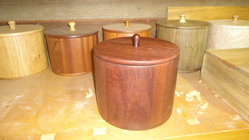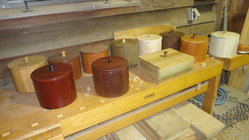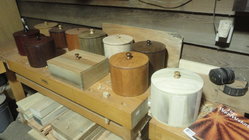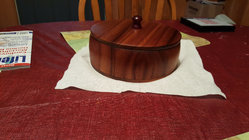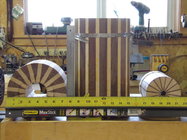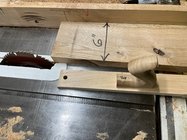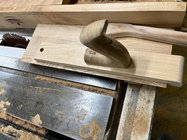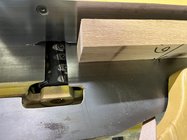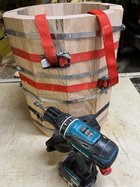I am primarily a bowl turner. I own a Nova DVR 3000 which has a 16" swing.
I've turned 4-500 bowls from 3" to as big as the Nova would handle (15"+-)
Pretty comfortable with a bowl gouge and/or a carbide cutter. Even some hollowing tools
I've got all the gadgets and tools a woodturner would acquire over 20+ years of turning.
I have a friend who is a drummer and a drum builder. He's already glued up his first stave blank.
So he wants my help because I have a lathe and obviously know how to do such a thing.
Ha!
So I've searched forums and watched some youtube videos
Some ideas but more questions
Turning stave drums presents some issues.
Holding both ends of a 14" (dia) by 8" hollow drum securely on the lathe comes first to mind.
Tailstock end: I guess I need some kind of "faceplate" for the tailstock end. Plywood?
On the drive end: I have a Longworth chuck that could grab one end. Or perhaps make an expansion for a set of cole jaws?
I'm concerned it may not have the holding power for the inside cuts we would need to make, even at low rpm
I'm thinking some kind of steady rest would almost be mandatory.
If anyone on the forum has done such a thing (or similar) and would be willing to pass on some good ideas, they would be most appreciated
Thanks
I've turned 4-500 bowls from 3" to as big as the Nova would handle (15"+-)
Pretty comfortable with a bowl gouge and/or a carbide cutter. Even some hollowing tools
I've got all the gadgets and tools a woodturner would acquire over 20+ years of turning.
I have a friend who is a drummer and a drum builder. He's already glued up his first stave blank.
So he wants my help because I have a lathe and obviously know how to do such a thing.
Ha!
So I've searched forums and watched some youtube videos
Some ideas but more questions
Turning stave drums presents some issues.
Holding both ends of a 14" (dia) by 8" hollow drum securely on the lathe comes first to mind.
Tailstock end: I guess I need some kind of "faceplate" for the tailstock end. Plywood?
On the drive end: I have a Longworth chuck that could grab one end. Or perhaps make an expansion for a set of cole jaws?
I'm concerned it may not have the holding power for the inside cuts we would need to make, even at low rpm
I'm thinking some kind of steady rest would almost be mandatory.
If anyone on the forum has done such a thing (or similar) and would be willing to pass on some good ideas, they would be most appreciated
Thanks

